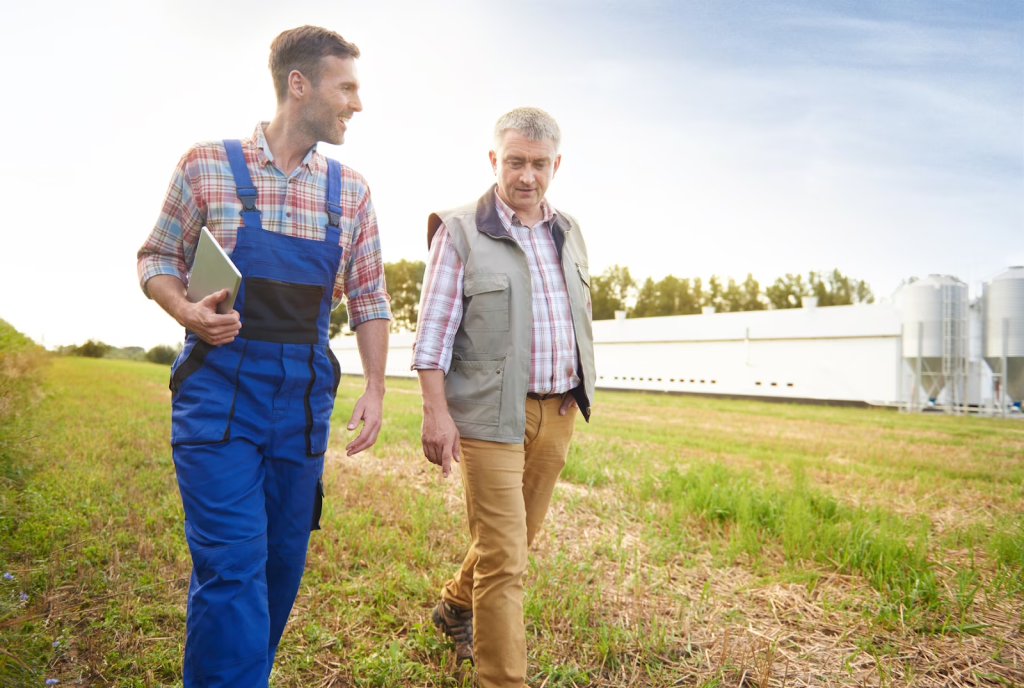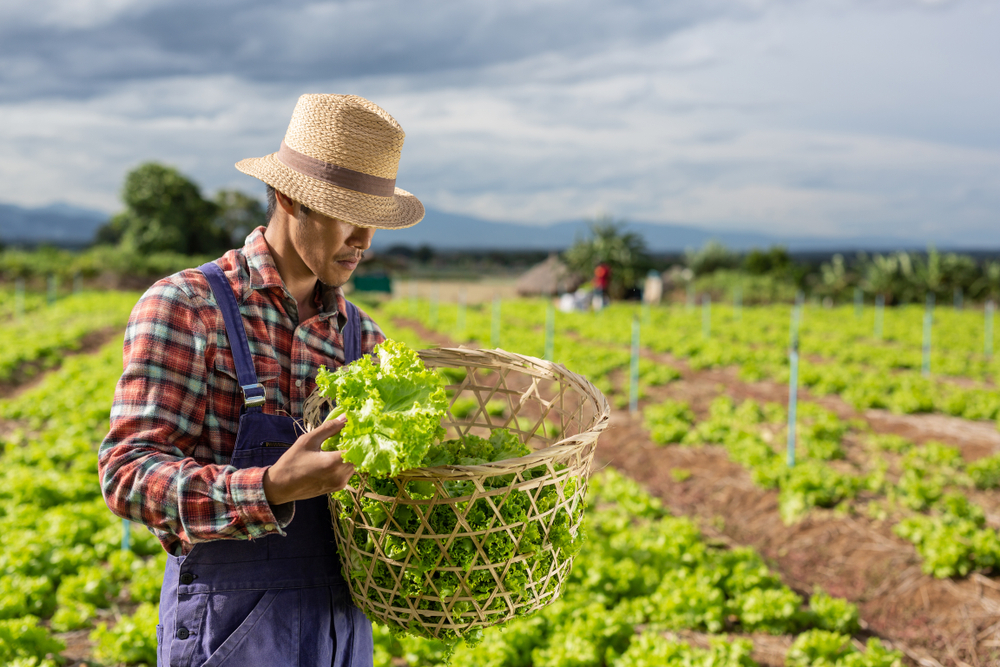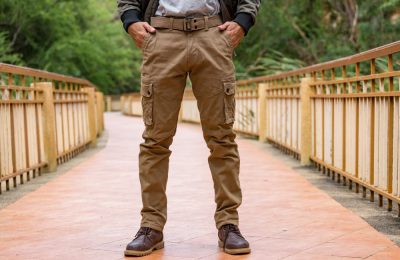|
Getting your Trinity Audio player ready...
|
Agriculture requires intense labour. It is a vocation that requires agricultural knowledge, commitment, and high-quality clothing. Choosing the proper agricultural clothing and equipment is essential for functionality, durability, and safety. Want to know what to look for in the crucial head-to-toe workwear for farmers, such as hats, coveralls, mittens, and boots? Herein are our best suggestions.
Encourage farmworkers to don appropriate attire
Working on a farm requires the use of protective apparel. Long-sleeved shirts, trousers, boots and other articles of clothing protect from ticks, poisonous vegetation and the sun’s harmful UV radiation.
Take a Closer Look: Different Types of Safety Boots for Different Types of Jobs

However, not all protective attire is optimally designed to aid in heat dissipation. Ensure your farmhands know that wearing light-coloured, loose-fitting, breathable apparel made of cotton or linen will allow them to shed heat more effectively.
The Most Frequent Farm Clothing
Farmers require specialised work attire that protects them from specific hazards and keeps them comfortable throughout the day. It is essential to prioritise characteristics such as durability and functionality so that they can perform their duties safely and efficiently.
Suggested Read: Personal Protective Equipment: How to Choose the Quality PPE?
Here are a few tips to assist you in selecting the proper agricultural attire:
Unrestricted liberty of mobility
Many Australian clothing brands offer an extensive selection of elastic workwear trousers that stretch in all dimensions. This provides unparalleled mobility and eliminates concerns about your pants feeling too tight. If you prefer fixed-fabric work trousers, you can get stretch zones where additional mobility is required, such as the lower back and the area around the knees. These labour trousers are ideal if you spend most of your working day seated in a tractor, combine harvester or other vehicle.
Suggested Read: Workwear Trousers Types 2023 | Workwear Style & Fashion
Footwear
As a farmer, you can select from footwear selection, including PU rubber boots, clogs, safety shoes, and sandals. Your choice will depend on your work tasks and personal preferences.

Consider whether the footwear will be worn in hot or frigid climates, as well as whether or not it must be waterproof. All footwear for agriculture is washable at 40 degrees, preventing the spread of pathogens and ensuring high cleanliness.
Layer up
You likely spend most of your day outside when working in agriculture. This requires you to wear apparel that is neither too cold nor too warm. Many stores provide an extensive selection of functional undergarments, T-shirts, and sweaters ideal for layering.
When you dress in layers, you can remove and reapply your clothing based on your activity level. The inner layer must be moisture-wicking so that perspiration can evaporate. The middle layer must be toasty and insulating to ensure warmth. The outer layer should provide weather protection.
Functionality and Comfort
The ideal agricultural clothing balances usefulness and comfort. Farming is a multifaceted vocation incorporating nature, machines, and human labour. Similarly, the apparel should be a harmonic blend of protection, comfort, and adaptability.
- Antimicrobial clothing: Because farming frequently involves contact with organic matter, wearing antimicrobial clothing can limit bacterial growth, preventing skin diseases.
- Reinforced Stitching: Reinforced stitching is beneficial in high-wear areas such as the knees and elbows. This gives not only longevity but also additional protection.
- Ventilation and Airflow: Modern designs contain ventilation systems, particularly in boots and coats. This enhances airflow, keeping the farmer cool during strenuous activities.

Tips for Choosing Agricultural Clothing
- Choose materials that will withstand wear and tear. For example, cotton is breathable and robust, making it ideal for farm wear.
- UV-protective clothing can help avoid sunburn and minimise the risk of skin problems.
- Look for clothing that has been ergonomically designed. This not only increases comfort but also has the potential to increase productivity.
- High-visibility jackets, protective gloves, and safety eyewear may be required depending on the task.
- Select clothing that is simple to clean and keep. This assures lifespan and cleanliness.

Tradition and Technology
While agricultural practices have adapted to new technologies over time, so has the apparel associated with the occupation. The traditional attire of robust boots and wide-brimmed hats is now supplemented with novel materials and styles customised to modern-day farming needs.

Weather-Resistant
Waterproof coats and trousers can be handy with variable weather patterns. This prevents unexpected rain from impeding labour. Furthermore, moisture-wicking fabrics keep you dry and comfortable by wicking away sweat.
Hats and Headgear
A decent hat does more than protect you from the sun. It’s for ventilation, rain protection, and occasionally even protection from low-hanging trees. Modern designs feature UV-protective materials; some even have nets to defend against bug bites.
Integrated Technology
Today’s apparel incorporates technology for further benefits. Some jackets include built-in cooling or heating systems. Similarly, touch-sensitive gloves allow farmers to use cellphones or touchscreens without removing their gloves.
Adaptability
Multi-functional clothing pieces, such as convertible pants that convert into shorts or coats with detachable sleeves, provide adaptability. This enables farmers to adapt their clothing to meet the moment’s needs.
Sustainability
Many companies now provide environmentally friendly agricultural apparel as the world shifts towards more sustainable practices. Organic cotton, recycled materials, and environmentally friendly manufacturing procedures help the environment and give a soft and comfy feel.
Conclusion
To summarise, while agriculture requires hard effort and dedication, correct workwear can make jobs go more smoothly and safely. Investing in quality clothing is more than simply a question of comfort; it is also an issue of health, safety, and efficiency. So, the next time you shop for agricultural apparel, remember that it’s not just what you wear but how it helps you with your everyday tasks that counts.


